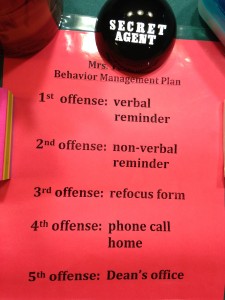(This post is for teachers, administrators, school librarians and parents.)
I’d like to recommend that schools look objectively at book fairs they may have in place. Is your book fair promoting literacy? Is that 10% to 25% of sales that you will receive for putting on the book fair compensation enough for the class instructional time lost? Do you want students to be exposed to all the TV shows and movies that are part of book fair merchandise? Could you make money more effectively by putting on your own book fair with local merchants? Most importantly, can children without money get books at your fair?
As currently practiced, the typical book fair involves the librarian and others, who set up displays filled with often expensive books, shiny pencils, decorated erasers, movie posters, posters of Justin Bieber and other modern heroes, plus candy and tiny plastic toys, DVDs, video games, posters, and even key chains. Students visit the book fair, filling out wish lists to take home. Schools receive a percentage of total books and merchandise sold.
In practical terms, a teacher sacrifices instructional time as she shepherds students into the book fair so they can fill out wish lists. The teacher makes reading suggestions, even as she watches to make sure that pencils and erasers do not disappear into student pockets. Students fill out lists with books, posters and toys. Nobody ever writes down erasers or pencils. In financially disadvantaged districts, though, they buy a lot of erasers and pencils, along with plastic spiders and other cheapies, because those items are all many kids can afford. More class time will often be sacrificed to make purchases.
A large percentage of the books sold at a typical event may be linked to a movie, television show or video game. Personally, I think selling the Hunger Games, Divergent or Twilight may promote reading, so I am not as negative on this aspect of book fairs as many of my colleagues seem to be. Any book that walks out the door is a win as far as I am concerned.

Unfortunately, too few books walk out that door. Few students in financially-disadvantaged districts can afford hardcover books and even paperbacks are becoming pricey. Six dollars might as well be twenty dollars if all you have is $1.87. Some students have no money and are simply standing around looking at books and toys they know they cannot afford, while watching other students make purchases. Even kids with money make bad choices. The boy with $5.00 may return home with flexible pencils and a Star Wars poster. Teachers can encourage books, but the school gets a cut of the flexible pencils, so those pencils return, year after year.
I have watched the faces of those students with no money as they looked longingly at different displays. A roving Facebook post on the Scholastic Book Fair contains thousands of entries, quotes like “True story! I would go look and make my list take it home and i’m pretty sure it went in the trash!” or “All i could afford were erasers and bookmarks…. That i never used. Haha” or “I never had money for a book. Now I make sure my kids have money so they don’t feel like I did.” The pathos in those many posts hurts my heart, as I read toss off lines from adults who still recall the pain of book fairs, and who feel that pain acutely enough across the years to add their thoughts to the post.
Information can be found on the internet about creating a book fair that provides books without all the commercial tie-ins, toys and geegaws that are now sold at these fairs. A good place to start is CCFC’s Guide to Commercial-Free Book Fairs at http://www.commercialfreechildhood.org/resource/commercial-free-book-fairs.
Eduhonesty: Anyone out there up to taking on a dragon? The standard book fair has become a well-oiled machine, an easy, quick way to raise a little money and supposedly promote literacy. Frankly, a field trip to the library would do much more to encourage literacy. Book fairs often encourage consumerism more than reading. But those fairs are easy. Other people do most of the initial work. The librarian gets stuck with set-up. After the displays go down, the school receives a percentage of total $$ sales.
We can do better. If we want to promote literacy, we ought to try to make arrangements with local bookstores or civic organizations. We can create book fairs that celebrate books. As part of this local book fair project, we should find a way to get at least one book into the hands of that sad kid who has no money.
Let’s get the plastic spiders, flexible pencils and Justin Bieber out of our schools.
Let’s make our book fairs celebrations of books, our own versions of those midnight Harry Potter new release parties that drew adults and children of all ages into bookstores, many wearing their burgundy and gold Gryffindor scarves and feathered McGonagall hats.
Let’s create reading adventures.



